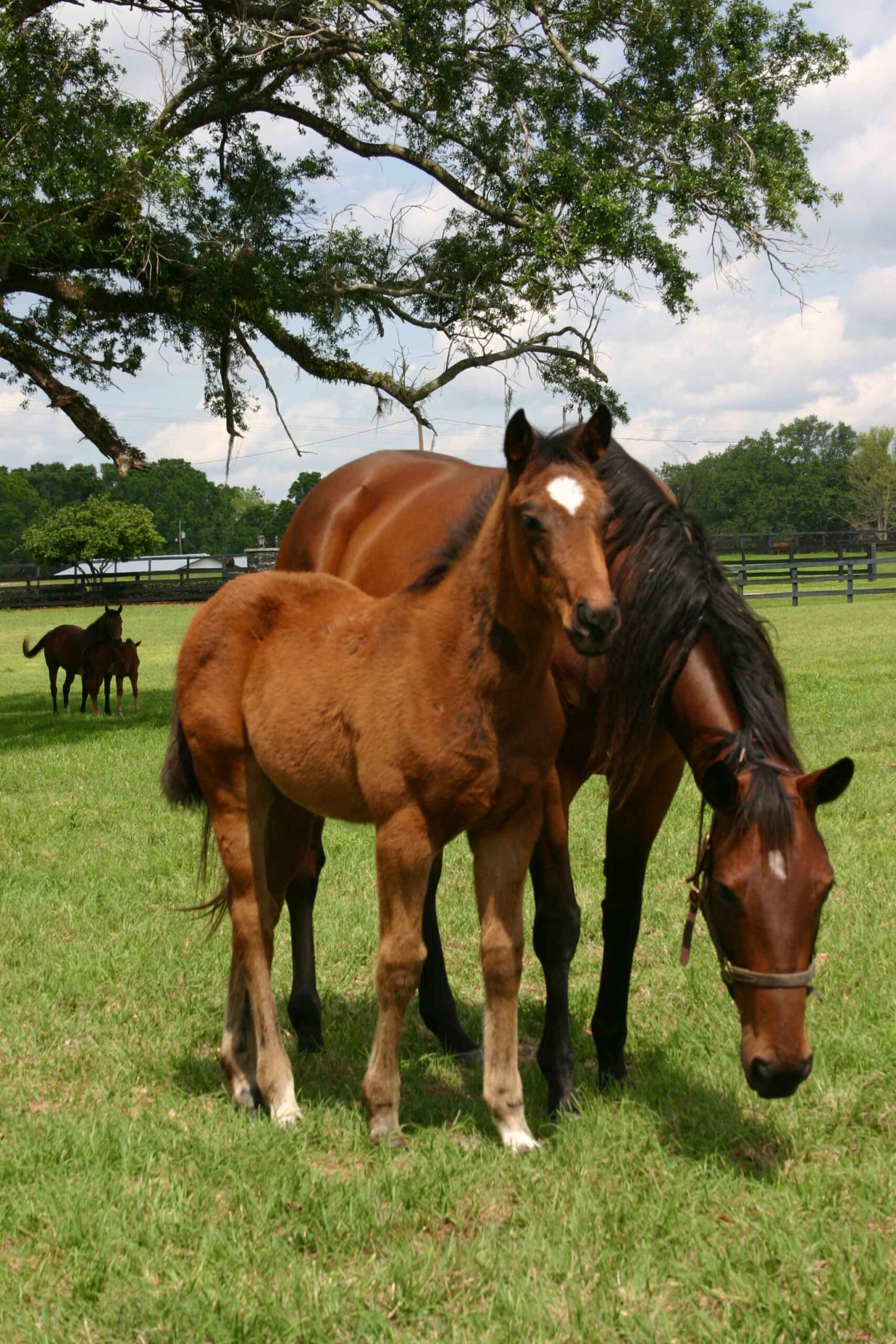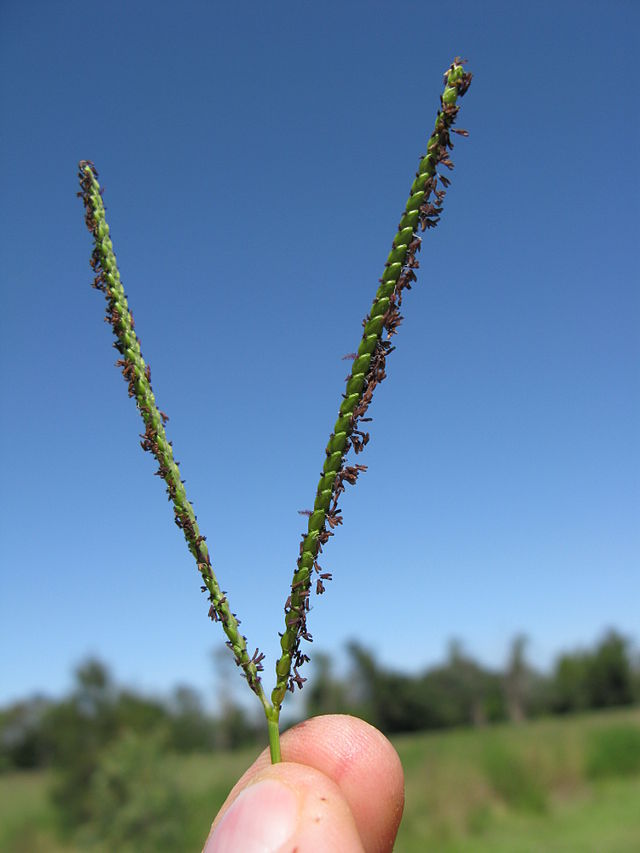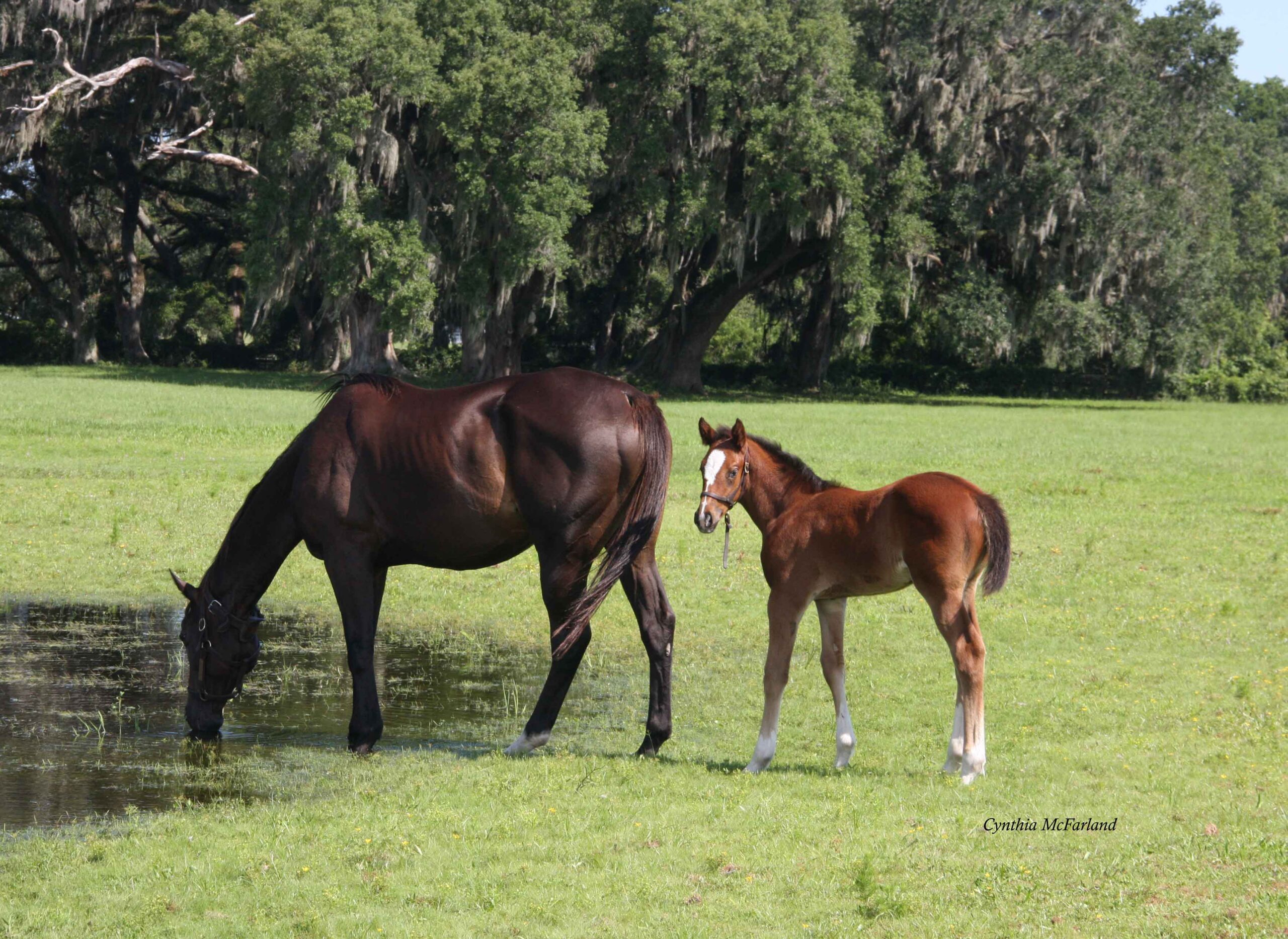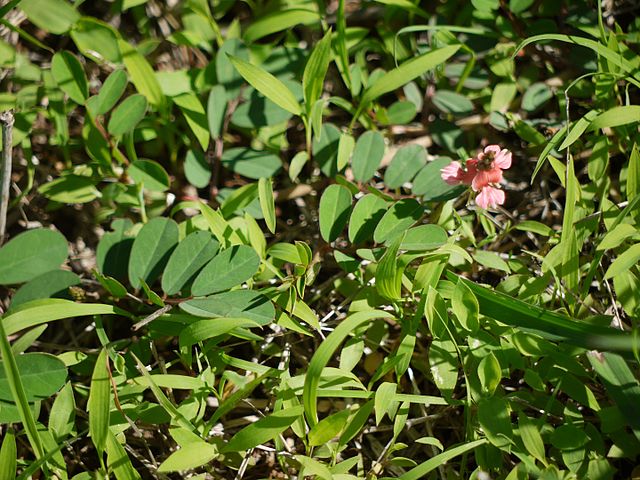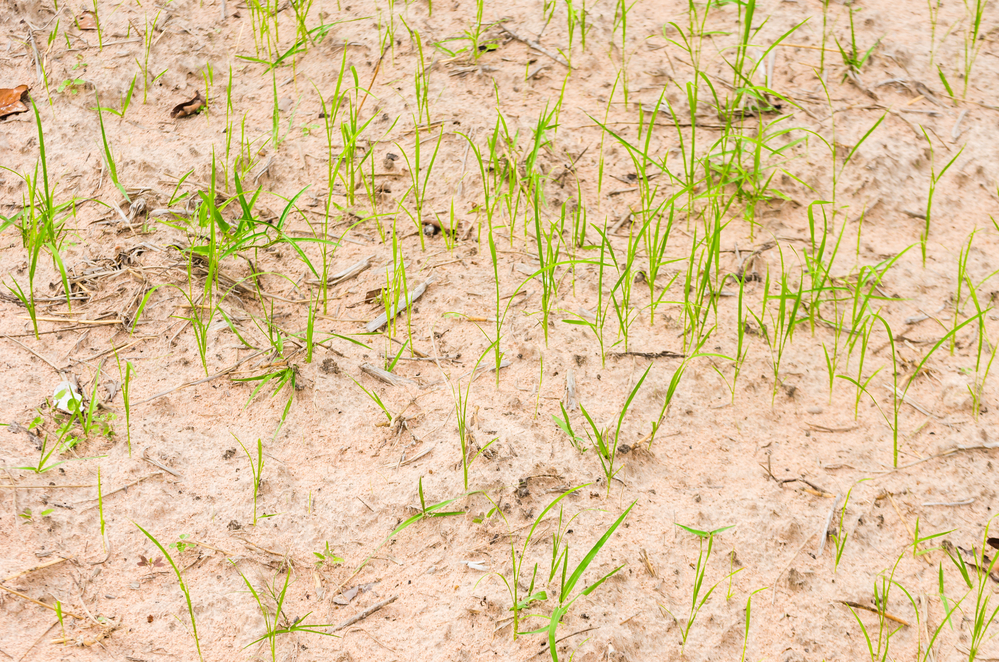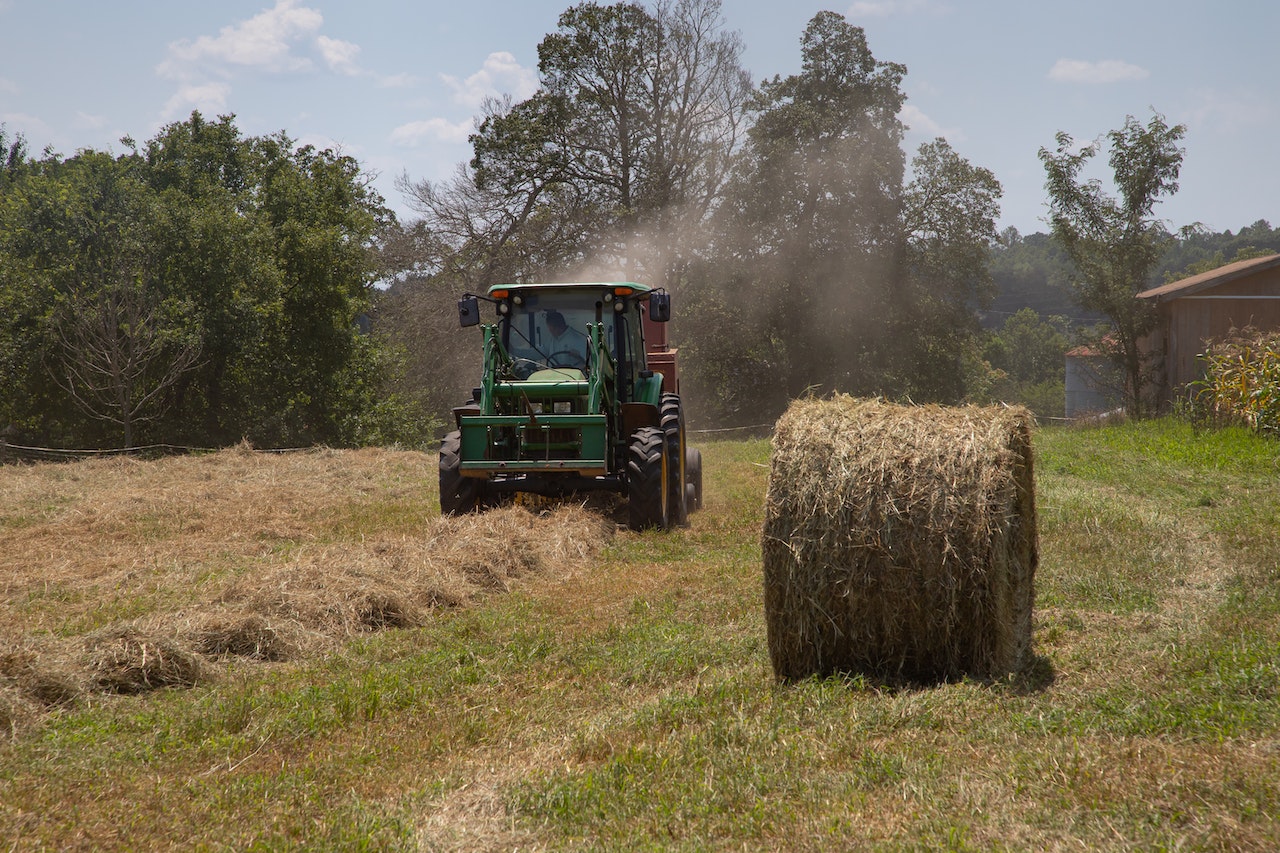
Photo courtesy of Marlene McChesney
Florida Pasture:
Keep it Green and Growing
by
Cynthia McFarland
Some move up from south Florida, but many relocate from out of state. It usually only takes a matter of months to realize the soil and grass in this part of the Sunshine State is not like the pasture you were familiar with where you lived previously.
Maintaining picture-perfect pastures for grazing starts with understanding that what works in other states may not work here at all.
Some horse owners new to Ocala learn this the hard way. Especially if they arrive in late spring or early summer when pastures are lush with growth.
They buy a farm that hasn’t had any horse traffic for months and turn ten horses out on a 10-acre pasture in June. By the time that grass goes dormant come winter, the once luxurious pasture is grazed down to almost nothing.
Wait, what happened? Is the grass gone for good? What should have been done differently?
Photo courtesy of Cynthia MacFarland
Bahiagrass
“Our soil and climate are very different and that makes it suitable for growing just one option for grazing horses. Bahiagrass is king for pastures here. We just don’t have the environment to grow timothy, fescue or alfalfa,” says Justesen.
The sandy soil, heat, and rainy conditions here require a forage that can not only handle, but thrive, under those conditions. Bahia fits the bill. It can also handle heavy grazing—provided it’s well managed.
“Where other species might struggle with disease processes in those conditions, bahia is very well adapted to our soils and climate,” says Justesen, who works with both cattle producers and horse owners seeking advice in pasture management.
Too much pressure
“On bahia pasture, we recommend one horse per two acres. This is not ‘one-size-fits-all’ as there are different soils even within Marion County. You can push the stocking rate more if you have optimal conditions and a well-established good stand of grass. It also depends on how your property is set up,” says Justesen.
“While bahia can get a good root system and should last decades if you manage it well, as soon as you start to abuse it and overstock your pastures and leave horses on it 24/7, seemingly overnight you have a problem,” she notes.
What starts with bare spots will lead to weeds moving in where there was once grass.
It helps to realize just how much horses really consume when pasture is their main source of forage.
Grazing throughout a 24-hour period, the average adult horse consumes approximately 100 pounds of grass per day. Considering the water content of grass, this amounts to about 30 pounds of dry matter.
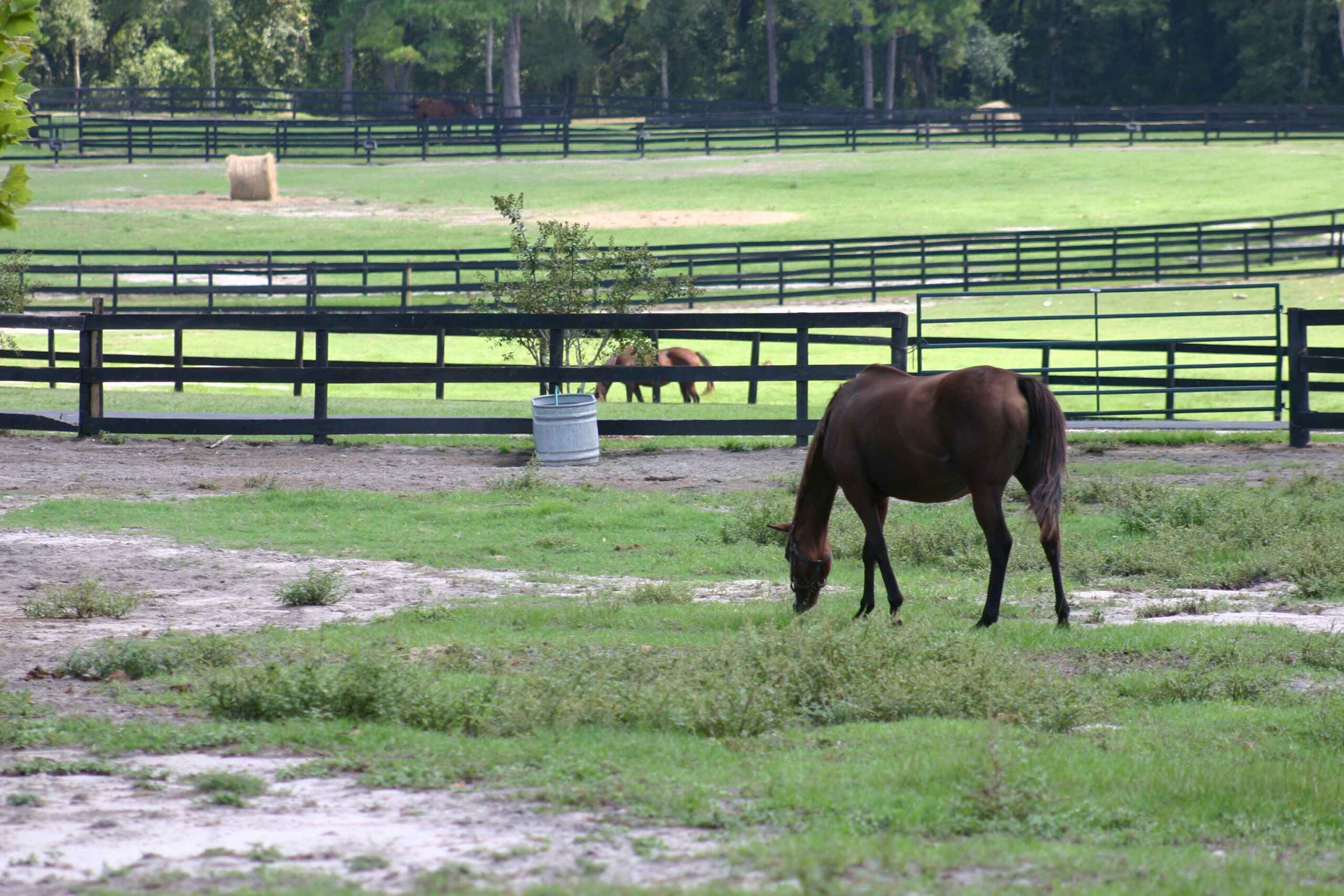
Photo courtesy of Cynthia McFarland
Multiple this by the number of horses turned out on the pasture and you’ll better understand just how much forage is removed from a field by grazing alone.
That’s a lot of pressure on native grass. What’s a horse owner to do?
Managing bahia pastures
She adds that many horse people just assume they’ll feed hay year-round and accept that turn out time on pasture is more for exercise and mental health than actual forage consumption for basic nutrition.
Photo courtesy of Cynthia MacFarland
If you have more horses than the recommended stocking rate, don’t provide 24-hour access to pasture. Limit the hours horses are turned out to graze. Feed supplemental hay as needed to maintain healthy body condition, instead of relying primarily on pasture.
Keep in mind that stocking rates apply year-round, not just when grass is growing. This means even if you’re feeding adequate hay when grass is dormant or in times of drought, if you keep horses on the pasture, they are still wearing it down and eating whatever grass does manage to grow. For these reasons it’s especially important that pastures not be overstocked during winter or drought conditions.
Horses are the hardest livestock on pasture because, unlike cattle and sheep, they have both top and bottom teeth in the front of their mouths. This allows them to graze grass down very low and even pull it up by the roots.
Start right
Ideally, you should pull a soil test on a property prior to purchase so you know exactly what you’re dealing with. If you’ve just bought a farm, plan on the soil test right away. This is especially helpful if the seller doesn’t provide records on past fertilization and soil tests, or if you’ve bought raw land.
Soil testing reveals the pH level and gives you a clear picture of the soil’s present condition and what you can do to improve or maintain it.
University labs and agriculture consulting companies charge a nominal fee to run the test and results are usually available within seven to 10 days.
On farms of 50 acres or less, only one test is generally needed. Even if you have 10 paddocks on a 30-acre farm, you don’t need to test each individual pasture.
Separate soil tests are recommended only when there are obvious breaks in soil type (such as property that contains both heavy soil which tends to hold water, as well as dry, sandy soil) or when sections of land have been treated differently, for example, some acreage was used for crops, while other was pasture.
“Once you have a farm, fall is the best time to soil test. If you test in the fall and it shows you need to apply lime, you’ll have time for the soil to get where it needs to be before you apply fertilizer next spring,” explains Justesen.
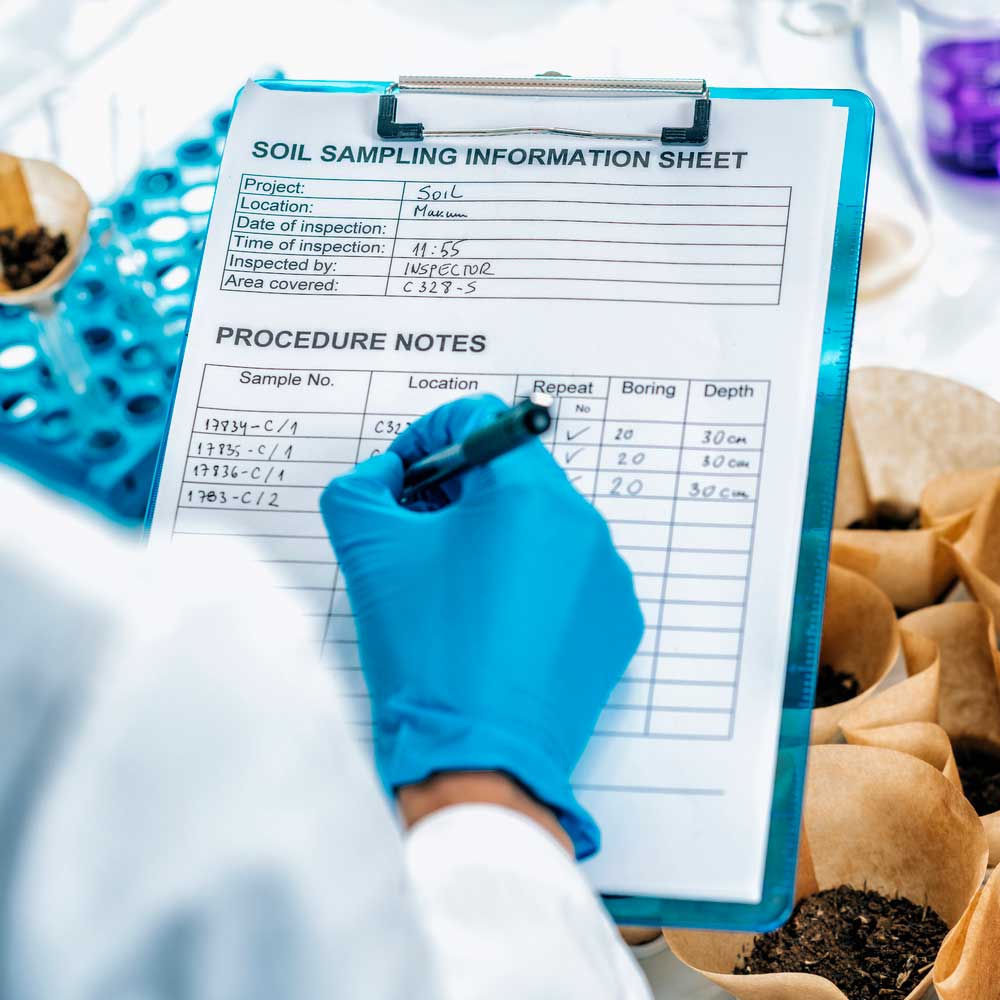
Soil test results
“Bahiagrass prefers things a certain away and you have to work with it, or you won’t have grass. Once it’s up and growing, you don’t have to spend an arm and a leg to maintain it,” says Justesen.
Optimal conditions for bahia pasture:
• Hot, moist climate
• Slightly acidic soil 5.5 – 6.0 pH
• Sandy, well-drained soil
• Sunny, open areas (not shade)
“Every forage, including bahia, prefers a certain range of pH. Our soils tend to be slightly acidic and bahia prefers pH somewhere between 5.5 and 6.0,” says Justesen.
If your soil test comes back under 5.0 pH, it’s considered low for bahia. In that case, you’d want to add lime to raise it to the recommended level.
Either lime (crushed limestone) or dolomite (dolomitic lime) can be used to raise pH. Dolomite usually works faster than regular lime, but you should allow four to six months for lime to change the soil pH.
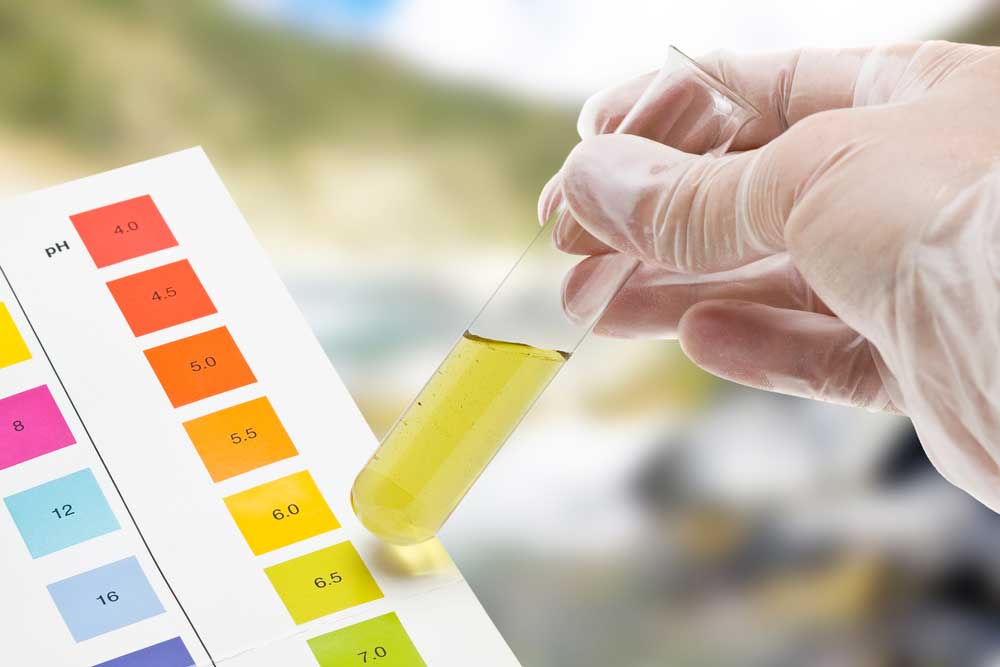
“Once you get the pH where it needs to be, you usually just have to add lime every 5 to 10 years,” she notes.
Sometimes people buy property without knowing how the land was used in the past. Soil testing is invaluable in these situations.
“It could have been old crop land or pine forest. If it was formerly crop land and was heavily fertilized, this could have dropped the pH below 5.0, and once you’re at that point, you need to take action,” says Justesen.
So how often should you soil your test?
Unless the initial test reveals major issues that need to be addressed, you only need to soil test every two to three years.
If the first test showed low pH and you had lime applied, then pull a second test six to 12 months later to be sure the soil is at the baseline pH of 5.5 to 6.0 for bahia.
In addition to analyzing pH, testing will reveal if there’s a nutrient deficiency in the soil, which can be addressed by fertilizing accordingly.
In this area, our grass doesn’t start coming out of dormancy and growing until the end of February or early March. This would be the earliest you’d want to fertilize.
What about weeds?
Because bahia doesn’t like shade and doesn’t hold up well when overgrazed, weeds tend to invade those areas.
While there’s probably no such thing as totally weed-free pasture in Florida, Justesen encourages farm owners to think of it as a balancing act.
“If you have 30 acres and three horses, you can overlook the weeds more than someone with three horses on 10 acres. Stocking rate is huge. The more you stress pasture, the more weeds will love it and you’ll have a constant battle with weed control,” she notes.
“Herbicides are a great tool when you know how to use them for mitigating weeds in a selective manner to kill the weeds and not the grass. Once you get on top of weeds and have good management, you might not need to use herbicides every year,” she adds.
Some herbicides require horses to be removed from the area for a specified amount of time. Others allow horses to graze after the spray has dried. Read label directions carefully and follow recommendations, particularly when breeding stock will be grazing the pasture.
Your county extension agent can help with weed identification, as well as answer questions about which products to use for optimum efficiency and timing.
Bringing back damaged pasture
“Bahia is a marathon runner, not a sprinter,” says Justesen, who is often called out to inspect pastures and advise farm owners on what steps to take.
Once significant damage is done to a bahia pasture, it will take time to bring it back to health.
“Bahia is resilient and can make a good comeback if you can manage weeds and fertilize and control the grazing. This often proves quicker and cheaper than reseeding the whole pasture,” says Justesen. “At the very least you might save enough of it that you won’t have to reseed the whole thing.”
While overseeding works fine with some species of grass, bahia isn’t one of them.
If a pasture is too far gone and reseeding is necessary, you’ll want to follow the right plan to save money and frustration.
Know up front that optimal results aren’t possible if you insist on keeping horses on the field.
“Bahia is an expensive seed, so you need to be very intentional,” says Justesen, who recommends using only certified, quality seed.
Depending on rainfall, anywhere between April and August is the window for reseeding a bahia pasture.
“After reseeding, you need to take horses off the pasture totally for a minimum of six months and preferably one year,” says Justesen. “In our sandy soil, it takes a year for bahia to establish a strong root system. If you put horses on it earlier, the grass will look good, but the horses will pull it up by the roots and you’ve lost all that expensive seed and time.”
Mowing guidelines
For bahia pastures, 5 to 8 inches high is considered the perfect vegetative height. Regular mowing to maintain pastures at this height helps control weeds, reduces spot grazing, and keeps seed heads from forming.
“A lot of people think if they let their bahia go to seed, it will thicken their pastures. You might get some reseeding, but other seeds won’t be viable or have the right environment to grow,” says Justesen.
Avoid the temptation to mow so low that pastures look “like a yard.”
Grazing and horse traffic put enough pressure on the grass. Continually mowing low will stress the roots, and over time, this practice can seriously damage the stand of grass.
Once farm owners have a clear understanding of what our soil and pastures need to stay healthy, it’s much easier to keep them green and growing. After all, those beautiful fields are a major reason for moving here in the first place.
For more information, check out your local agriculture extension.
Horse owners relocating to the Ocala area will find a tremendous variety in the equine properties listed with Showcase Properties of Central Florida, Inc., and that variety includes the pastures on those farms.
